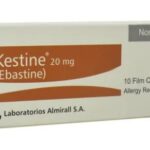
Mastering the Lead Funnel: A Comprehensive Guide
- 0
The lead funnel is a fundamental concept in marketing and sales. It acts as a road map for converting prospects into paying customers. This comprehensive guide will assist you in better understanding the lead funnel and increasing conversion rates.
What Exactly is a Lead Funnel?
A lead funnel, also known as a sales or marketing funnel, depicts the customer journey from initial awareness to making a purchase decision. It outlines the various stages a prospective customer goes through before becoming a loyal customer. A lead funnel’s primary function is to direct your marketing and sales efforts in order to effectively nurture and convert leads.
A Lead Funnel’s Stages
A typical lead funnel is made up of several stages, each with its own set of characteristics and objectives. Let’s take a closer look at these stages:
1. Being Aware
The awareness stage is at the top of the funnel. This is where prospective customers first learn about your brand, product, or service. They may have learned about your company via social media, a blog post, a Google search, or word-of-mouth. The main goal at this point is to catch their attention and make a good first impression.
Strategies for the Stage of Awareness:
- Content Marketing: To attract and engage your audience, create informative blog posts, videos, infographics, and social media content.
- Search Engine Optimization (SEO): Improve your content’s visibility by optimizing it for high rankings in search engine results.
- Social Media Advertising: Run targeted ad campaigns on social media to reach a larger audience.
- Public Relations: Obtain media coverage or work with influencers to increase brand visibility.
2. Interest
Prospects move to the interest stage once they are aware of your brand. They begin to investigate your offerings and show genuine interest at this point. They may subscribe to your newsletter, follow you on social media, or obtain a free resource.
Strategies for the Stage of Interest:
- Lead Magnets: In exchange for contact information, offer valuable resources such as ebooks, webinars, or templates.
- Email Marketing: To nurture leads and provide more information, send personalized, informative emails.
- Webinars and Workshops: Hold online events to inform and engage your audience.
- Retargeting Ads: Show targeted ads to people who have expressed interest in your brand.
3. Consideration
Prospects are actively evaluating your offerings during the consideration stage. They compare your products or services to those of competitors and look for more detailed information. It is critical to provide content that assists them in making informed decisions.
Strategies for the Stage of Consideration:
- Case Studies and Testimonials: To build trust, showcase success stories and reviews.
- Product Demonstrations: Provide live or recorded product demonstrations.
- Comparison Guides: Create content that compares your offerings to those of competitors.
- Email Nurturing: Continue to nurture leads with content that is relevant to their interests.
4. Intent
Prospects have a strong desire to purchase at this point. They could ask for a quote, start a free trial, or add items to their shopping cart. To encourage conversion, it is critical to provide a seamless and user-friendly experience.
Intention Stage Strategies:
- Clear CTAs: Make use of compelling calls to action (CTAs) that direct prospects to the next steps.
- Remarketing: Show personalized ads to users who have expressed an interest.
- Demos and Free Trials: Allow prospects to try out your product or service for themselves.
- Live Chat: Provide real-time assistance with questions and concerns.
5. Make a Decision
Prospects become customers during the decision stage. They complete the purchase or sign the contract. It is critical to streamline the process and remove any potential roadblocks.
Strategies for Making a Decision:
- Streamlined Checkout: Simplify and reduce friction in the purchasing process.
- Customer Service: To address any last-minute concerns, provide excellent customer service.
- Offers and Discounts: Think about providing incentives for immediate action.
- Confirmation and Follow-Up: Send confirmation emails and follow up with customers to ensure their satisfaction.
6. After-Purchase
The post-purchase stage is frequently overlooked but equally important. It is all about converting one-time customers into ardent supporters. Encourage customers to provide feedback, leave reviews, and recommend your brand to others.
Strategies for the Following-Purchase Stage:
- Surveys and Feedback: Gather customer feedback to improve your products or services.
- Loyalty and Rewards Programs: Provide incentives for repeat business and referrals.
- Email Campaigns: Use post-purchase emails and updates to stay in touch with customers.
- Community Building: Create a sense of belonging for customers to connect and share their experiences.
Developing Your Lead Funnel
Now that you understand the stages of a lead funnel, it’s time to design one for your company. Here’s where to begin:
1. Create a Buyer Persona
Begin by identifying your ideal customer. Who exactly are they? What are their concerns and objectives? Understanding your intended audience is essential for developing relevant content and messaging.
2. Create a Customer Journey Map
Make a visual representation of your lead funnel, outlining each stage and the strategies and content that go with it.
3. Publish High-Quality Content
Create content that is relevant to your audience at each stage of the funnel. Your content should address their needs, respond to their questions, and lead them to conversion.
4. Use Marketing Automation
Use marketing automation software to automate lead nurturing and scoring. Automation can assist in delivering the appropriate content at the appropriate time and tracking prospect interactions.
5. Maintain and Improve
Analyze the performance of your lead funnel on a regular basis. Determine bottlenecks, drop-offs, and opportunities for improvement. Make data-driven changes to improve conversion rates.
For expert guidance and strategies in the realm of lead generation, explore the services offered by RocketStatus. Their expertise can help you refine your lead funnel, improve conversion rates, and achieve your lead generation objectives effectively.
Conclusion
Mastering the lead funnel is critical for any company looking to convert prospects into loyal customers. You can nurture leads and drive conversions more efficiently if you understand the stages of the funnel and implement targeted strategies. It is important to remember that the lead funnel is not a one-size-fits-all solution. To achieve the best results, tailor your approach to your audience and continuously optimize. You’ll be well on your way to attracting and retaining valuable customers for your business with a well-designed lead funnel, learn more here.







